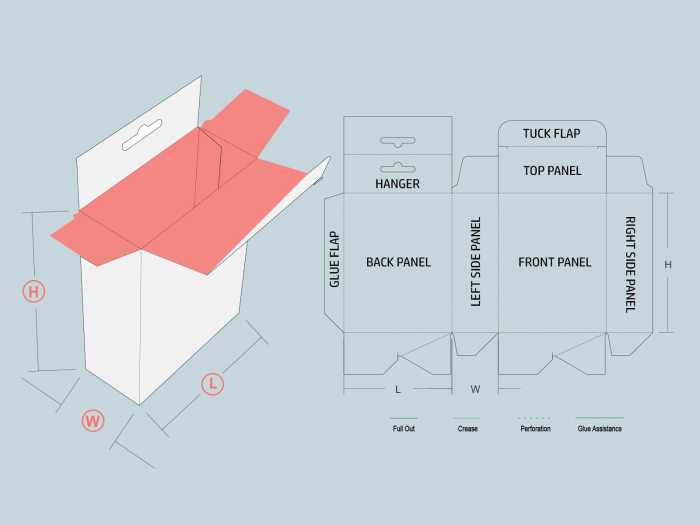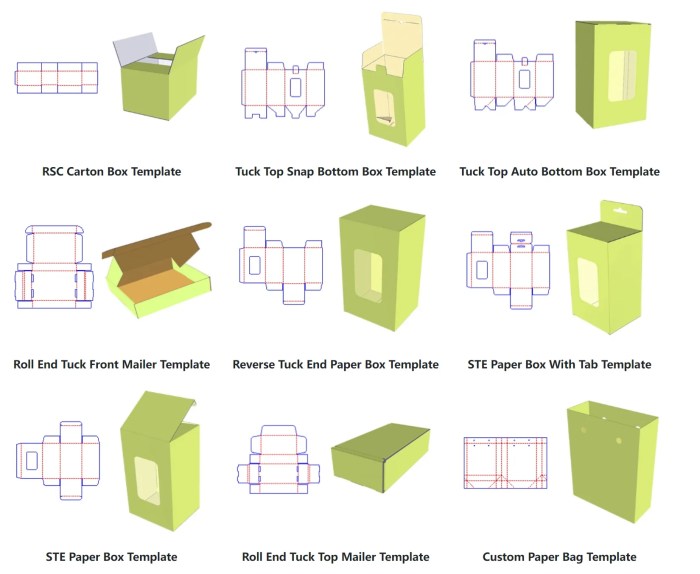Unveiling the World of Dieline
Exploring the intricate world of dieline, this article delves into its significance in graphic design, shedding light on its role in creating visually appealing products.
From defining dielines to discussing their types and creation process, this comprehensive guide covers all you need to know about dielines.
Overview of Dieline
A dieline in graphic design is a template that Artikels the dimensions and layout of a product's packaging or printed material. It serves as a guide for where the design elements, images, and text should be placed to ensure proper alignment and fit.
Importance of Dielines
Dielines play a crucial role in the design process by providing designers with a blueprint to follow when creating packaging or print materials. They help ensure that the final product will be accurately cut, folded, and assembled according to the intended design.
- Dielines ensure consistency: By using a dieline, designers can maintain consistency in the size and shape of the final product across different print runs or packaging variations.
- Structural integrity: Dielines help designers visualize how the final product will be constructed, ensuring that it will hold its shape and function as intended.
- Easier production: Having a dieline helps streamline the production process, making it easier for manufacturers to understand and execute the design accurately.
Examples of Products Using Dielines
Dielines are commonly used in a wide range of products, including:
- Boxes: Packaging for products such as cosmetics, electronics, and food often utilize dielines to create the box structure.
- Bags: Shopping bags, gift bags, and promotional bags rely on dielines to determine the shape and size of the final product.
- Labels: Dielines are essential for creating labels for bottles, jars, and other containers, ensuring a precise fit and alignment of the design.
Types of Dielines
When it comes to dielines, there are various types used across different industries to create packaging and print materials. These dielines serve as templates that Artikel the shape and structure of the final product, guiding designers and manufacturers in the production process.
Let's explore the different types of dielines and how they vary based on the specific product being designed.
Dielines for Packaging vs. Dielines for Print Materials
Dielines for packaging and print materials serve distinct purposes and have unique characteristics. Dielines for packaging are designed to create structural integrity, ensure proper fitting, and enhance the overall aesthetics of the product. On the other hand, dielines for print materials focus more on the layout and design elements, such as brochures, flyers, or business cards.
- Packaging Dielines: Packaging dielines are typically more complex, with intricate folds, tabs, and cut lines to create the desired shape of the final product. These dielines need to consider factors like product protection, ease of assembly, and shelf appeal.
- Print Material Dielines: Dielines for print materials are simpler, focusing on the layout and design elements like margins, bleed areas, and safe zones for text and images. These dielines ensure that the final printed piece looks visually appealing and communicates the intended message effectively.
Variation of Dielines Based on Product Design
Dielines vary significantly based on the specific product being designed, taking into account factors like size, shape, materials, and functionality. For example, dielines for a rectangular box will differ from dielines for a cylindrical container or a display stand. Each product requires a unique dieline that aligns with its purpose, aesthetics, and structural requirements.
- Food Packaging Dielines: Dielines for food packaging need to meet strict safety and hygiene standards, often incorporating features like seals, windows, or handles for convenient use.
- Cosmetic Packaging Dielines: Cosmetic products often require dielines that enhance the visual appeal and brand identity, incorporating unique shapes, embossing, or special finishes for a premium look.
- Promotional Print Material Dielines: Dielines for promotional print materials like posters or banners need to consider the visual impact, readability, and ease of display to attract and engage the target audience effectively.
Creating Dielines

Creating a dieline from scratch involves careful planning and precise measurements to ensure the final product fits perfectly. Here are some tips for creating dielines accurately:
Process of Creating a Dieline
To create a dieline from scratch, start by sketching the Artikel of the packaging or product you want to design. Use a ruler and measuring tape to determine the exact dimensions of each side and angle. Transfer these measurements to a digital design software for a more precise layout.
Make sure to include cut lines, fold lines, and any other necessary markings on the dieline for production.
Tips for Accurately Measuring and Designing a Dieline
- Use a high-quality ruler and measuring tools to ensure accurate measurements.
- Double-check all measurements before finalizing the dieline to avoid errors in production.
- Consider the material thickness and properties when designing the dieline to ensure a proper fit.
- Include bleed and safety margins to prevent any important design elements from being cut off during production.
Software Tools for Dieline Creation
Commonly used software tools for creating dielines include Adobe Illustrator, ArtiosCAD, and Esko Studio. These programs offer features specifically designed for dieline creation, such as measurement tools, grid systems, and templates for various packaging types. By utilizing these software tools, designers can create precise and professional dielines for their projects.
Dieline Best Practices
When it comes to designing an effective dieline, there are several key considerations to keep in mind. A well-executed dieline can enhance the overall user experience of a product and contribute to its success in the market.
Considerations for Designing an Effective Dieline:
- Clear and precise measurements: Ensure that the dieline is accurately measured to fit the product perfectly.
- Simplicity and readability: Keep the dieline design simple and easy to understand for both the manufacturer and the end-user.
- Structural integrity: Make sure the dieline provides enough support and protection to the product during transportation and handling.
- Brand consistency: Incorporate brand elements and colors in the dieline design to maintain brand identity.
Examples of Well-Executed Dielines in Graphic Design:
Some well-known examples of creatively designed dielines include the packaging for Apple products, which feature sleek and minimalist designs that reflect the brand's identity. Another example is the dieline for Coca-Cola cans, which has become iconic and instantly recognizable worldwide.
How Dielines Contribute to the Overall User Experience of a Product:
- Easy assembly: A well-designed dieline can make it easier for the end-user to assemble the product without confusion or frustration.
- Enhanced visual appeal: A creatively designed dieline can attract consumers and make the product stand out on the shelves.
- Functional packaging: Dielines play a crucial role in ensuring that the product is packaged securely and efficiently, protecting it from damage.
Concluding Remarks

In conclusion, dielines serve as the backbone of design, influencing the user experience and visual appeal of various products. Dive into the realm of dielines and elevate your design game today.
FAQ
What is a dieline?
A dieline is a template used in graphic design to show the layout and dimensions of a product's packaging or printed material.
How do dielines contribute to user experience?
Dielines ensure that the final product is structurally sound and visually appealing, enhancing the overall user experience.
What are some common software tools for creating dielines?
Adobe Illustrator, CAD software, and other graphic design tools are commonly used for creating dielines.




